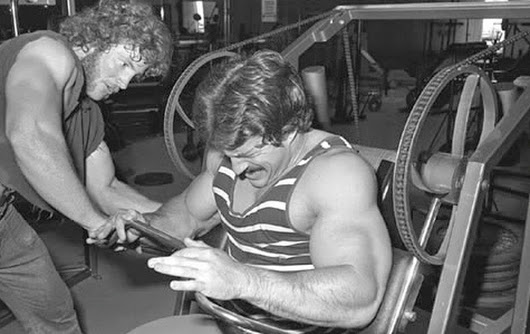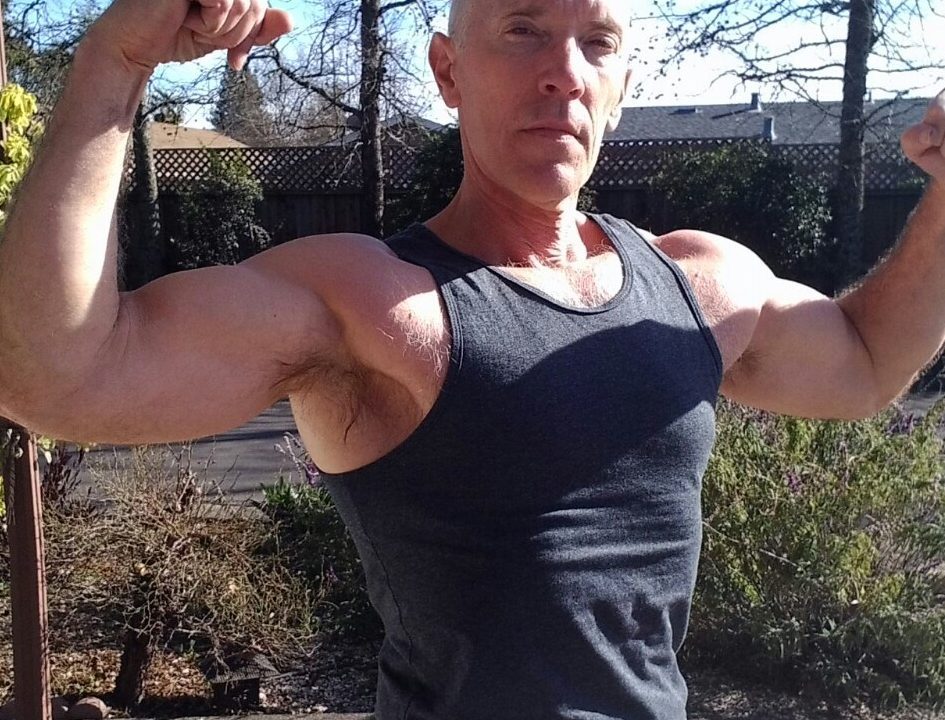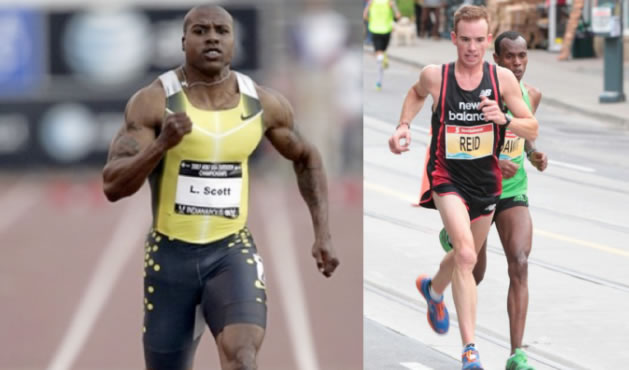What is exercise?
Exercise as something undertaken deliberately is not natural. Animals and humans in a natural habitat don’t exercise; their physical activity is a byproduct of life activities, such as hunting, gathering, mating, fighting, or fleeing predators.
We modern humans exercise deliberately, we expend energy with the end of improving our health and getting our bodies in better shape.
But what counts as exercise? This is actually an interesting question.
Suppose you’re a trained distance runner, and on an off day you decide to take a two-mile walk because you’re tired of sitting around the house, and need some refreshment. Does that count as exercise?
No, it does not, because it won’t result in any improvement in your health. It doesn’t provide enough of a stress to cause the body to increase its aerobic or muscular abilities.
Now, suppose you’re a 90-year-old man who’s in ill health, mostly confined to your comfy chair, and you do the same two-mile walk. Does that count as exercise?
Yes. It will result in a stress on your system that will cause a physiological reaction that will, ultimately and if repeated enough, result in better health.
Exercise must be of sufficient intensity relative to the fitness of the person exercising.
A two-mile walk can be healthful even for someone who’s already in good shape/health, because it means that the person is not sedentary, and being sedentary causes insulin resistance and an increased risk of death, even if exercise is done during other times. But it doesn’t count as exercise in the sense of increasing fitness.
To count as exercise, the activity must in some way push the limits of what a person is capable of.
High intensity exercise
A just-published study looked at a group of swimmers, who were divided into three groups. One, a control group, did nothing; a second swam at high intensity, low volume; and a third swam at low intensity, with high volume.1
The high-intensity group performed swimming at 6 to 10 all-out intervals of 30 seconds each, with two minutes rest between each bout.
The low-intensity group swam continuously for one hour.
Both groups did this three times a week, for 15 weeks. Then they measured the swimmers’ insulin sensitivity, a prime marker of the effects of exercise.
Only the high-intensity swimmers saw an improvement in insulin sensitivity. For the low-intensity swimmers, the result was zero change.
Clearly, the low-intensity, high-volume swimming barely counts as exercise. It wasn’t intense enough to result in an improvement.
I don’t do much swimming, but my impression is that most people who swim for exercise do it like the low-intensity group. Only less volume. That’s probably doing little for their health.
How can you know whether your exercise has enough intensity to result in improvement?
The way to know is that the exercise should leave you gasping for breath and wishing you could stop.
Cardiorespiratory fitness
Cardiorespiratory or aerobic fitness is highly correlated with health.2 High cardiorespiratory fitness apears to be way more important for health than traditional cardiac risk markers such as lipids, and more important than body mass index.
High exercise capacity may be the single best predictor of long life.
Cardiorespiratory fitness is usually measured by VO2max, which is the body’s maximal uptake of oxygen in milliliters per kilogram of body weight per minute. A calculator will let you input a few bits of information about yourself and it will estimate your VO2max. This is a legit operation from the K. G. Jebsen Center of Exercise in Medicine at the Norwegian University of Science and Technology.
The calculator estimates my fitness, a VO2max of 51, as on the level of an average 31-year-old. I’m disappointed: the average 31-year-old these days is a mess — sedentary and overweight. Other sites say that level makes me highly fit — for my age.
But ideally there should be no age-related decline in VO2max. If you think that that’s normal, then you’re just buying into the notion that there’s nothing much you can do about aging, that decline is inevitable.
If you read this site much, you already know that I reject that notion.
So it’s true what everyone says about exercise: it’s very good for you, and you must exercise to be in good health.
Components of VO2max
But what is VO2max? In reality, it’s a measurement that’s affected by several components, such as maximum heart rate, cardiac output, hemoglobin, lung capacity, and the level and quality of mitochondria and energy-producing enzymes.
To get VO2max to an optimal level, all of these must be functioning properly.
For this to happen, exercise must strain your current ability. Then your body will develop its capacity beyond its current limits.
Notably, exercise that doesn’t train the whole body will not give the best results in terms of VO2max. While running can improve the heart muscle, it raises aerobic enzymes only in the legs.
High-intensity weight training comes very close to being a perfect exercise. Not saying you can’t or shouldn’t do anything else, but you probably won’t need to. High-intensity interval training is another great way to improve fitness.
As for walking, swimming, or other low-intensity activity, go ahead and do them if you enjoy them. I do. I walk daily, and swim in the summer.
But I don’t fool myself that this is greatly improving my cardiorespiratory fitness. They’re enjoyable activities that make me feel better, nothing more.
For those who are not in good shape, such as the elderly and the infirm, walking is a great thing to do and will improve cardiorespiratory fitness.
Conclusion
- In order to raise cardiorespiratory fitness, exercise must be challenging and of sufficient intensity
- Lower intensity exercise is beneficial, but may not raise cardiorespiratoty fitness
- Cardiorespiratory fitness may be the single best predictor of health and long life
- High intensity training, whether a weight lifting or sprint/calisthenics program, may be the best way to raise fitness
PS: Check out my Supplements Buying Guide for Men. And my book, Muscle Up, which discusses weight lifting and high intensity interval training.
- Low-volume high-intensity swim training is superior to high-volume low-intensity training in relation to insulin sensitivity and glucose control in inactive middle-aged women. PMID:27473445 DOI:10.1007/s00421-016-3441-8 ↩
- Kokkinos, Peter. “Physical activity, health benefits, and mortality risk.” ISRN cardiology 2012 (2012). ↩














14 Comments
I’ve often wondered about the ‘workout’ factor. Whenever I’m stuck at a desk I set a timer to remind me to do say 15 burpees or pushups or do a handstand for twenty seconds – every half hour. Only one exercise, and only one set. Then back to work at the desk until the next half hour has passed, My heart rate goes up a tad, as does my breathing. And over time, my strength goes up as well (in the relevant muscles) .
But from what you seem to be saying, my cardio respiratory fitness is not benefiting ?
I’m really not trying to be obtuse. You used the the expression ‘that it should be of sufficient intensity that you want to stop’. Now if I really cane it, I can do that in under a minute.
But you’re saying that spreading many of those super intense ”minutes’ out over the day is not as effective as doing the same number of ‘minutes’ squeezed into a shorter time frame?
My understanding is: you do repeated intervals of high- and low-intensity activity over a period of 20 – 30 minutes. (Or shorter, or longer, depending on the particular routine.)
Your heart rate going up a tad is certainly better than doing nothing, and yes, your getting up and doing at least that every half hour sounds like an excellent way to carry out your otherwise sedentary work day. But a session of proper HIIT is a different beast.
I’m an absolute convert, and feel sorry for the people I see doing the same old hour or two on the elliptical or bike in the gym, the way I used to. And how I never made any real progress doing that.
My normal routine is on the elliptical, starting out 3 minutes at low resistance just to get going. Then I crank it up to maximum and go as hard as I can for 45 seconds, then back it off to low for 45 seconds. I repeat this for a total of 27 – 30 minutes. (I started out doing 30 second / 60 second intervals.) My pulse gets up to >160 at the end of the max intervals, but I don’t know how low it drops before I start the next max. And then I do my abs after the HIIT.
My weight training schedule doesn’t really let me do burpees or other upper-body stuff, since I normally do HIIT 2 days after upper-body training.
Sorry, that total of 27 – 30 minutes includes the 3 minute warm-up.
fwiw–I took the assessment. I am 69 w. vo2max of 45 (vs expected 36) and fitness age of 47. I’ll take it. 🙂
The popup ads on this site are just becoming ridiculous. I realize Mr. Mangan has to earn a living, but I’m unsubscribing from this site in my RSS reader. The stuff here is interesting, but it’s not worth the annoyance.
Popups are set to show only every 7 to 20 days depending on which popup, and they’re not supposed to show to already subscribed visitors, if they subscribed through the SumoMe popup. I guess you consider that excessive, in addition to wanting everything for free. Don’t let the door hit you on your way out.
However… While I agree with all of this, I have been adding Mark Sissons Low and Slow style training for endurance and it works well. FWIW I am 48.
In a nutshell take 180 and subtract your age, then so long runs never going over that heart rate. You actually see your endurance improve by being able to go faster without the heart rate going up.
Please define the terms “high intensity,” “low intensity,” “high volume,” “low volume.”
I’m not an expert (but I did stay at a Holiday Inn Express last night) but I’ve been working with “high intensity” methods for last 5-6 years. I suggest Phil Campbell’s Ready, Set Go! book. He is also interviewed on Mercola’s site a few years ago.
my take: I go to the track preferably. I sprint 50-60 yards. that takes my heart rate to 160-165. then I walk until my rate goes down to 140, then sprint again. I do this 6-8 times depending on how I feel and outside temp. in winter, I adapt this to bike or treadmill.
as an alt, I use the stadium steps as they are easier on the knees.
but to your question: Campbell, Mercola and others define “High intensity” as very winded, can’t go more etc. it is subjective. start sprinting and you’ll figure it out.
See the swimming study I wrote about above. Or go to the original for more commentary on it. Also see my linked posts on high-intensity weight lifting and high-intensity interval training.
P.D., I’ve tried high intensity interval training in the form of CrossFit-type classes, and like them, but I get the effects of overtraining (lower focus, sore joints, etc) even if I am only doing them three times a week. I also do what I’d describe as low intensity running a few time a week, and feel like it helps with increasing my focus. I try to do that three times a week.
I guess my question is about frequency. Could you do, for example, one CrossFit-type class per week and still get the positive effects of that? At most two? Some of the guys do this stuff five days a week, and I just cannot do that, as my work suffers.
Said perhaps another way, could you get the positive effects of high intensity training only doing it once or twice a week?
LawDog, I’m glad you asked, good question. The short answer is that 1 or 2 workouts a week, of sufficient intensity, should be enough to keep you in good cardiovascular shape. I base this on the fact that in weightlifting, more than 1/week workouts has never been shown to be more effective in terms of muscle growth than 2 or 3/wk. Obviously, cardiorespiratory elements like VO2max may be different in that way from muscle hypertrophy, but my sense of that is not different by much. (So admittedly some of this is guesswork.)
I am in total agreement with you about the effects of overtraining, which in my case and in most manifests as fatigue. If you sleep right, eat right, and do everything else right, and you’re still tired, the place to look is frequency of workouts. Currently I do a high-intensity workout once every 4 days, the rest of the time walking or swimming at low intensity.
I had to fudge the waistline, since I don’t know what it is (but when I get a tape measure, it’s my belly, not my actual waistline, right?), so I gave it 90cm. Being 51 and 178 cm (I guess), with 2-3 workouts a week going all out, it gave me 50 and age 35. I’ll take it for now.
I just did it again using Oregon instead of Germany as my residence — no difference.